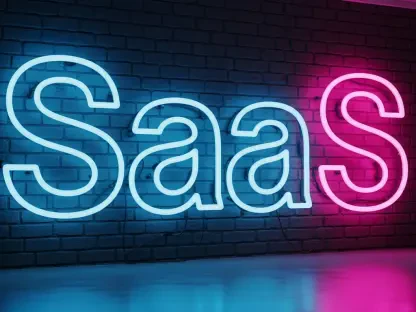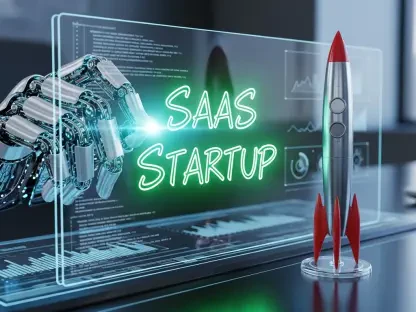When SaaS executives gather at conferences, growth is the headline act. Customer acquisition rates and market expansion plans dominate the conversation because, in this industry, standing still often feels like falling behind.
But in 2025, the obsession with growth-at-all-costs is colliding with a harsher reality. The era of easy capital and pandemic-fuelled adoption spikes is over. Valuations are tightening, and while public markets still reward strong topline numbers, the private SaaS ecosystem is learning a harder lesson: unchecked growth can hollow out the very foundations it’s meant to strengthen.
What’s less discussed—and more damaging—are the hidden costs of chasing growth at any price. These costs don’t always show up in quarterly reports, but can define whether a SaaS business thrives long-term or burns out before maturity. Here’s an in-depth look at them.
When Revenue Masks Risk
On paper, rapid revenue expansion is a win. But the economics behind it often tells a more complicated story.
Over-investment in customer acquisition, particularly through aggressive sales incentives and performance marketing, can create a dependency on a high burn rate that’s unsustainable without constant fundraising. Many SaaS firms still run acquisition campaigns based on projections that assume low churn and predictable upsell potential. In reality, post-pandemic buyer behavior is far more volatile.
Worse, chasing market share often leads to discounting wars that erode pricing integrity. A discounted customer is rarely a loyal one, and once the promotional period ends, churn spikes. The result? A deceptively inflated alternative reference rate that conceals an increasingly fragile customer base.
The lesson: Growth without a margin discipline is a revenue illusion, one that eventually demands correction.
Cultural Burnout: Scaling Teams Too Fast
Scaling teams rapidly, especially across multiple geographies, can stretch onboarding, culture-building, and managerial oversight to the breaking point.
New hires brought in under pressure may not have the institutional context or training to deliver on ambitious targets, leading to execution gaps and morale decline. In some cases, legacy employees become disillusioned as rapid changes disrupt established workflows and values.
And while leadership may view headcount growth as a sign of market dominance, employees often experience it as an acceleration of chaos. Burnout, attrition, and a loss of operational coherence become quiet but costly side effects.
True scalability is cultural as well as financial, and culture doesn’t compound on the same curve as revenue.
Building for Growth, Not for Value
When market share is the goal, product roadmaps can become hostage to expansion metrics rather than user needs. Features get prioritized for their demo appeal rather than their long-term fit with the core product vision.
This is particularly acute in the current AI race within SaaS. Under pressure to “ship something AI-powered,” many companies release tools that are more marketing assets than customer solutions. The result: short-term buzz, long-term technical debt, and a distracted development team that is pulled away from solving the deep, differentiated problems that originally built loyalty.
The danger here is product drift, where incremental compromises in product integrity, usability, or quality accumulate into a widening gap between what the company promised and what it delivers.
Growth-driven feature creep may win deals today but lose markets tomorrow.
Security and Compliance Debt
In the rush to expand user bases and deploy new integrations, security and compliance can become “phase two” considerations. This creates security debt—vulnerabilities that grow exponentially harder (and costlier) to fix as the platform scales.
The SaaS market is now more exposed to regulatory scrutiny than ever. Data sovereignty laws, AI transparency requirements, and evolving sector-specific compliance mandates mean that “dealing with it later” is a potential existential threat.
Beyond regulatory fines, breaches erode trust in ways that revenue graphs can’t offset. In a subscription economy, trust is not just an asset, but the entire renewal engine.
Security and compliance can’t be retrofitted without pain; they have to be embedded as part of the growth model itself.
Expanding Too Wide, Too Soon
Geographic expansion has a seductive logic: bigger markets equal bigger growth. But without localization, regional insight, and the right support infrastructure, international moves can drain resources faster than they deliver returns.
Similarly, expanding into too many verticals too quickly risks brand dilution. A SaaS platform that tries to be everything to everyone may find itself losing its category leadership to a competitor that stayed focused and deep within one niche.
The most successful SaaS growth stories in the past three years have one thing in common: disciplined sequencing. They expand into new markets or verticals only once the previous stage is operationally mature and financially solid.
Lesson here? Growth sequencing beats growth scattering.
Customer Trust Erosion
In the drive to capture more customers, sales cycles get shortened, onboarding gets rushed, and promises sometimes outpace delivery.
This creates a subtle but serious risk: customers feel they were sold a vision rather than a solution. Once that perception sets in, upsells become harder, referrals drop, and support tickets climb.
Customer advocacy is the most sustainable growth driver in SaaS, but it requires a long-game mindset. Mismanaging expectations in pursuit of rapid expansion compromises the very flywheel effect that powers market leaders.
Sustainable growth compounds on trust, not just acquisition volume.
The Case for Sustainable SaaS Growth
Challenging the “growth at any price” mentality doesn’t mean retreating into slow, defensive scaling. It means optimizing for profitable, durable, and adaptable growth models.
Leaders are increasingly recognizing the value of:
Balanced metrics: weighting profitability and customer retention as heavily as acquisition.
Cultural integration plans: scaling teams with intentionality, not urgency.
Product discipline: resisting opportunistic features that distract from core value.
Security-first design: embedding compliance as a growth enabler, not a cost center.
Market sequencing: expanding in deliberate, well-supported stages.
This is not a call to slow down, but rather a call to grow with precision.
The Growth Reckoning
SaaS history is full of companies that looked unstoppable—until the hidden costs caught up with them. In 2025, the market rewards operational discipline as much as bold ambition, so striking the right balance between these will be your competitive differentiator.
The takeaway is simple: growth remains the heartbeat of SaaS, but it only drives longevity when supported by profitability, trust, and focus.
In an environment where capital is tighter, buyers are more discerning, and regulation is intensifying, adopting a sustainable growth model is urgent. Be the leader who moves with the times.









